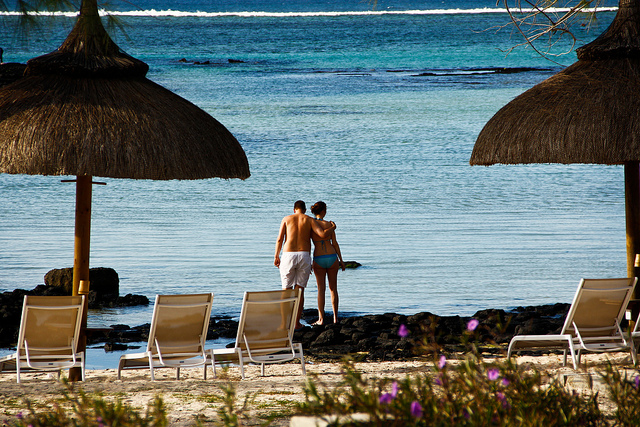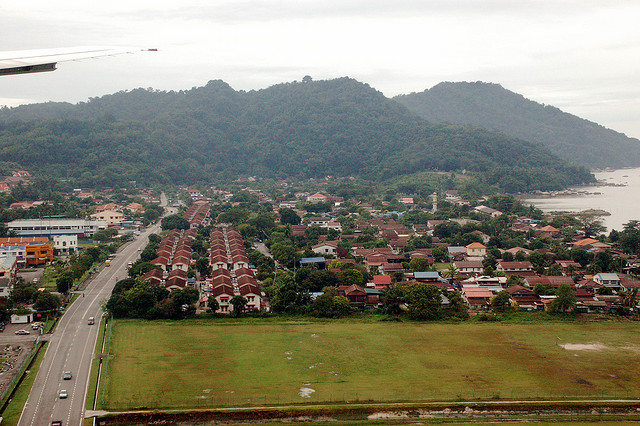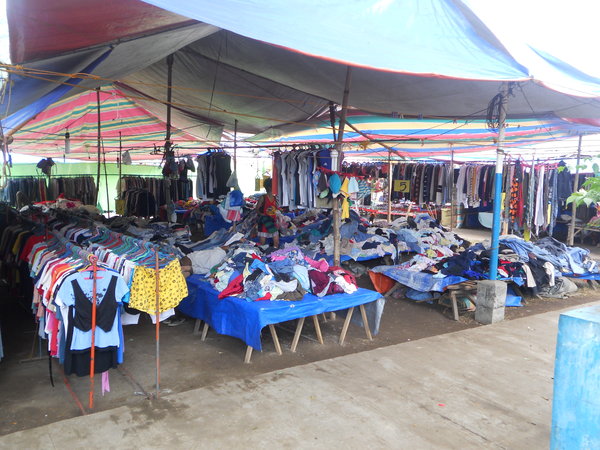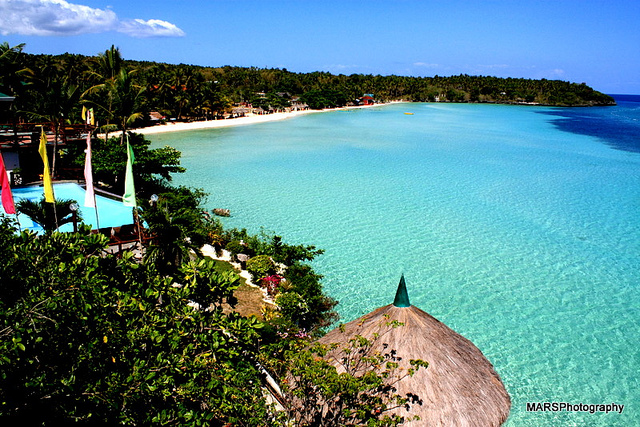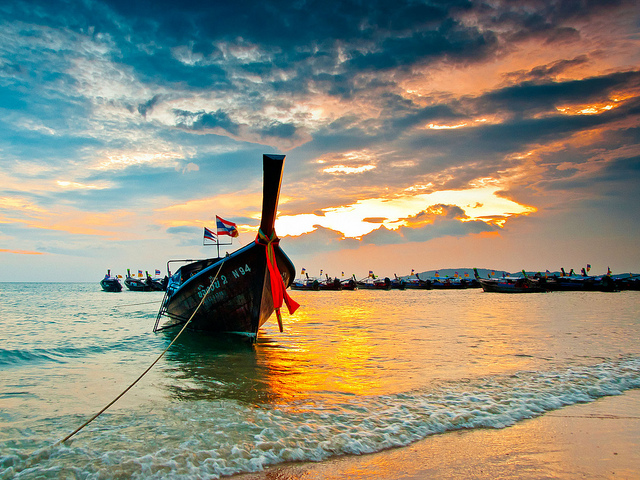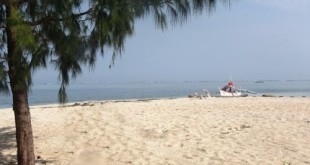All too often, turquoise waters and white sand drive heavy tourist traffic. Throw in affordable accommodation and sumptuous seafood and you have a real winner. Sprinkle it with hidden lagoons, barely explored caves, tranquil bays, verdant islets, vibrant marine life and extreme (under) water adventures, and you can’t believe your luck. Chances are, Google Earth has not scoped it yet, or the local movers and shakers have enough muscle to keep things pretty.
One hundred seventy-eight (178) kilometers south of Bacolod City, capital of Negros Occidental, lies Sipalay, the second southernmost town of the province. Four hours from Bacolod by public transport, Sipalay City was once a challenge to get to. But now, with rumor brewing that an airport may soon rise in Kabankalan City (two hours away), escaping from reality into fantasy is going to be easier than ever.
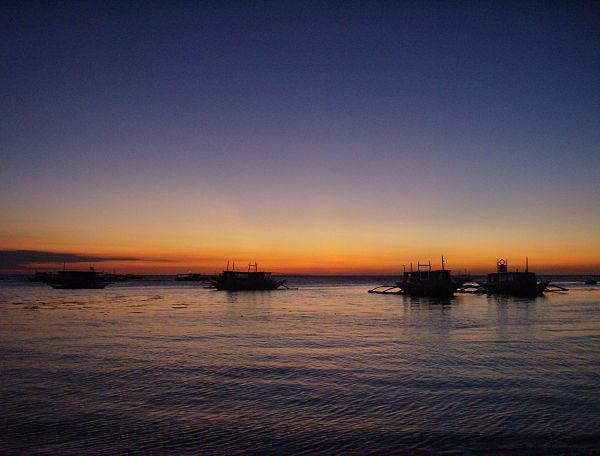
Beaches Galore
Sipalay sinuously lies on its western side for 45 kilometers, and faces the Sulu Sea. Unlike highly mature beach destinations, Sipalay has yet to grow a forest of hotel buildings on the waterfront. This means you can have a beach all to yourself even during peak tourist season!
From top to toe, Sipalay is outlined with white beaches and well-preserved mangrove forests. The longest stretch of white sand, at one kilometer, is in Punta Ballo, a steep drive 30 minutes to the south from the town center.
Curiously, it has a ‘sugar’ beach, aptly named for the fine brownish sand that resembles the province’s major agricultural product. On the southern end, a tiny cove catches the eye with its pink sand and pink granite cliff!
Then there is Campomanes Bay, a 4.5-hectare body of tranquil water home to an unbelievable collection of marine life and playground to intrepid water adventurers. Cartagena Bay in the north is smaller but is dotted with rocky outcrops and caves carved out by water, while Nabulao Bay in the south entices the visitor with a lone and posh island in the middle open to exclusive guests.
Spelunking, Scuba Diving, Vertical Rock Climbing and More
Sipalay is sensory overload to any traveler stopping by for only a few days. There is so much to do and so much fun and adventure to look forward to that a few weeks’ stay is recommended.
Caves abound in Sipalay, and can be found in the coastal areas as well as in the uplands. Spelunking is still in its infancy in this area, so the experience underground can be totally tourist-free.
Underwater, the marine life of the place is staggering, considering that elsewhere, coral reefs are crumbling and colorful fish are disappearing. Not in Sipalay. Shark and stingray cavort in its waters, and 100-pound yellowfin tuna are there for the taking if you are patient enough. In the pelagic zone, the clown fish is a common sight.
There are also a handful of wrecks off the coast that add mystery to life underwater. For this reason, Sipalay is fast becoming a favorite dive spot of local and foreign divers alike. If you can’t make it that deep, sea urchins, sea cucumbers, starfish, and turtles make regular appearances on the shore. Shell collecting is prohibited, so make sure to make a mental note (or a digital copy!) of exotic shells that you may pick up along the way.
Sheer granite cliffs facing each other make up Campomanes Bay’s natural barrier to the forces of the wind and the sea, a pair of rock formation that gets the adrenaline pumping.
Island-hopping is a major pastime of natives and visitors alike. Aside from islets covered in lush vegetation, Sipalay also boasts of lagoons in near-pristine state. In the stillness that thankfully comes even at the height of summer, birds can be heard flitting from tree to tree, and fish can be seen flying out of water. Brightly colored coral reefs and their denizens peek out of the water, so even if you left your snorkel behind, a pair of goggles will do.
Upland, Sipalay is still covered, albeit modestly, with first-growth vegetation despite active mining activities in the area. Copper and gold have been mined here for decades, and their impacts are monitored carefully to preserve the health of the coastal areas and surrounding old growth forests.
Accommodation, Dining Scene and Nightlife
Travelers who want pampering will not find Sipalay wanting. There are a handful of accommodations geared to discerning travelers, and plenty that are intended for backpackers.
In regards to the dining scene, it’s not so strong either. If you want International cuisine, you’ll have to head to the resorts.
Nightlife is on the mellow side. Most of the action takes place on the beach, and even then, there is very little serious partying after 9PM, except when there’s a local ‘fiesta’ (party). Then everyone comes out of their hiding.
How To Get There
Take a 45-minute flight from Manila to Silay City. From there, you can take a cab directly to Sipalay, but be prepared to shell out serious money (US$100). With your own hired transport, you get there in less than 4 hours.
If you want to do it like everyone else, you take a cab to Bacolod City, 15 minutes away. Instruct the driver to drop you off in the South Terminal where buses plying the Bacolod-Sipalay route are scheduled to leave every 30 minutes. Fare is about US$6.
Tourism has come to Sipalay in stages. At this stage, it is midway between developing the infrastructure it needs to accommodate more travelers, and preserving what is naturally there to entice travelers to come and stay. The time to visit Sipalay is now, before the forces of man and nature will wash it all away!
Photos by Cherry, jbeaulieu and jbeaulieu1
